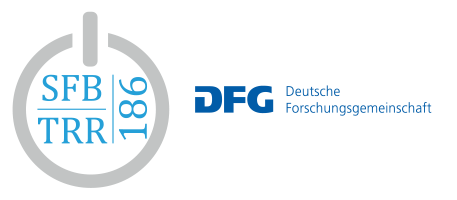A SUMO switch in EGF receptor signaling.
Small ubiquitin related modifier (SUMO) is an essential protein modification that regulates hundreds of proteins and numerous processes including signal transduction and transcription. Epidermal growth factor receptor (EGFR) signaling underlies one of the most prominent essential signaling networks in the cell. It is involved in cellular growth and development, as well as cancer progression. After stimulation with EGF, a highly complex signaling network is activated, which is tightly controlled by numerous feedback-loops. Prior to the first funding period, the Melchior team discovered that EGF treatment of HeLa cells induces rapid and transient deSUMOylation of several transcriptional co-regulators, amongst them the three poorly characterized family members IRF2BP1, IRF2BP2 and IRF2BPL – we speculated that this "SUMO switch" contributes to transcriptional control in EGF receptor signaling. Indeed, during the first funding period the Melchior team identified 38 genes whose expression within the first hour of EGF treatment was influenced specifically by the SUMOylation state of IRF2BP1. Amongst these were several well-known immediate early genes including DUSP1, an important feedback regulator in EGFR signaling. DUSP1 is a direct target of IRF2BP proteins, as both IRF2BP1 and IRF2BP2 bind to its proximal promoter. With the help of stable cell lines that express either wildtype or SUMOylation deficient IRF2BP1, we found that IRF2BP1 serves as a SUMOylation-dependent repressor of DUSP1. Transient deSUMOylation of IRF2BP1 thus contributes to timing and amplitude of DUSP1 expression. To gain insights into the broader physiological role that IRF2BP proteins may have, we also in- vestigated transcriptional changes upon knockdown of IRF2BP1 and IRF2BP2. Analysis of the many genes whose expression was altered upon knockdown revealed a striking enrichment of genes with "signaling" func- tions. Amongst the top hits was the EGF receptor gene itself. Not only the mRNA, but also the EGF receptor protein, both at the total level as well as at the plasma membrane, was significantly increased. In line with this observation, we found that IRF2BP1 or IRF2BP2 knockdown significantly increases cell proliferation rates. During the second funding period, for which the Melchior team joined forces with the group of Nils Blüthgen, we aim to expand our molecular and systems insights into the "SUMO switch". For this we will use regulation of the DUSP1 gene by IRF2BP1 as a paradigm. At the same time, we hope to gain deeper understanding of the role of the SUMO switch for the EGFR signaling network as a whole. The first aim, which will be the focus of the Melchior team, will be to dissect the molecular events by which transient deSUMOylation of IRF2BP proteins contributes to transient DUSP1 transcription. Milestones will be the identification of SUMO-dependent binding partners and the identification of binding elements in the DUSP1 promoter that mediate the SUMO-dependent repressive effect. The second aim will be to identify the molecular events that lead to time-resolved deSUMOylation and reSUMOylation of IRF2BP proteins upon EGF treatment; our preliminary data suggest this to occur on chromatin. We will first focus on the DUSP1 promoter, subsequently on other EGF-dependent immediate early genes that we found responsive to the SUMO switch, and finally on the DUSP1 promoter in other signaling pathways that we will study with the help of colleagues in the network (see below). One hypothesis that we follow in this aim is that the MAP or AKT kinase branches of EGFR signaling result in IRF2PB protein phosphorylation, which in turn may alter their susceptibility for SUMO isopeptidases or E3 ligases. Here we will greatly benefit from tools and expertise of the Blüthgen group, including HEK293 cells that carry an inducible construct of the proto-oncogene RAF, and which allows to activate MAP kinase signaling in a timely controlled manner. The third aim, which will be pursued by the Blüthgen group, will be to analyze how the interaction of SUMOylation dependent de-repression and phosphorylation-dependent activation contributes to the fast and transient induction of immediate early genes (IEGs). Although this model will initially be generic, it will be fed with specific insights gained by the Melchior team in Aim one. Finally, as fourth aim, the Blüthgen team will lead the endeavor to quantitatively analyze and model how the complex network of the SUMO-dependent IRF2BP proteins and negative feedback regulation by DUSPs changes signaling and EGF-induced transcriptome dynamics. For this we will exploit IRF2BP1 wildtype and mutant cell lines as well as single, double and triple knockout HeLa cells and analyze time dependent gene expression using the SLAM- seq technology based on metabolic labeling of nascent RNA. These quantitative data will allow the Blüthgen group to model precisely how the SUMO switch impinges on target gene expression dynamics, and dissect the role of the SUMO switch in the orchestration of the EGF induced transcriptional program.
